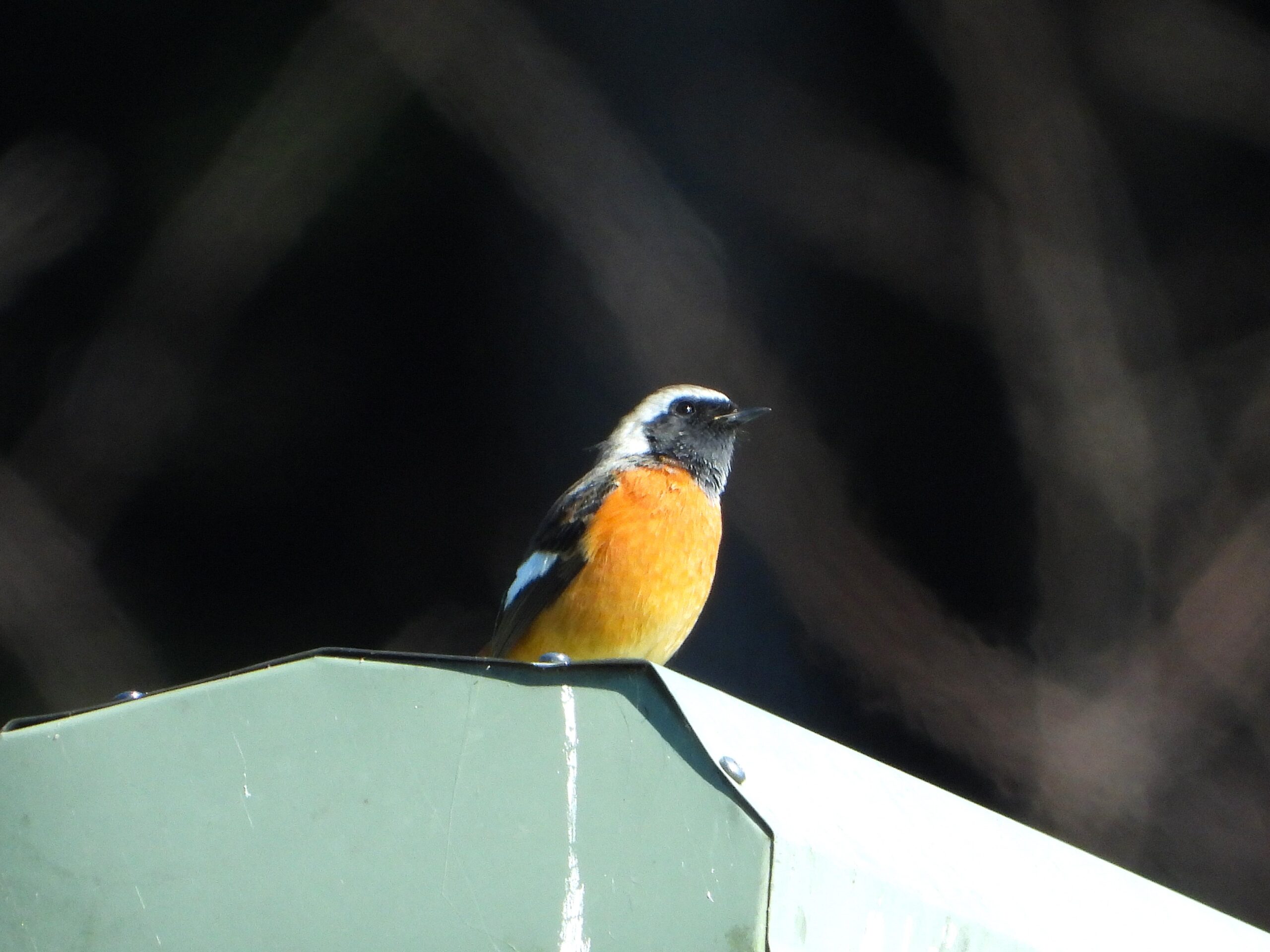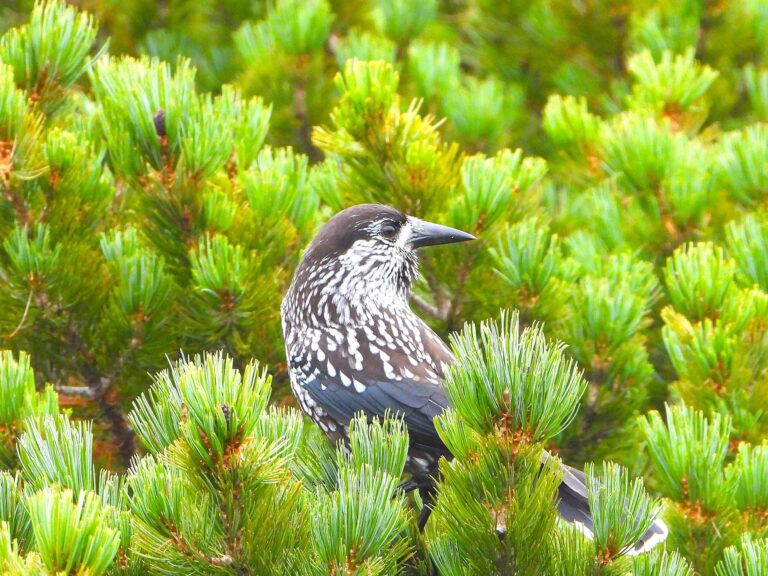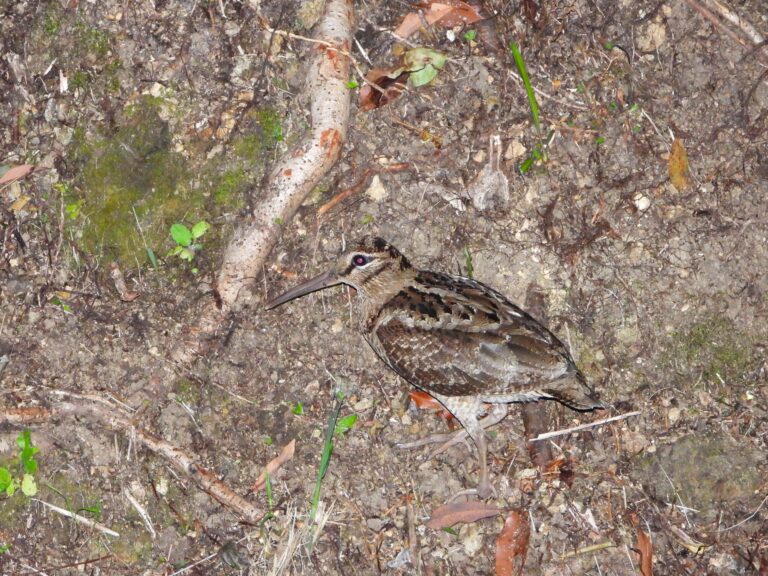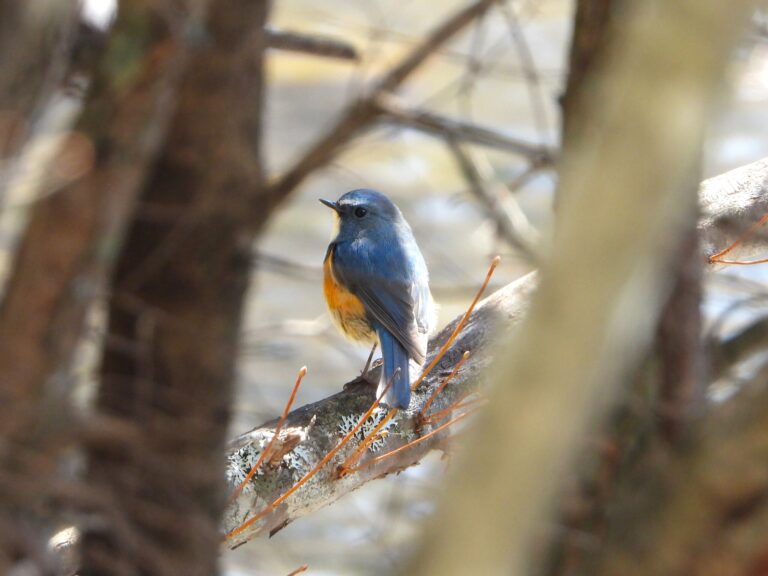Daurian Redstart (Phoenicurus auroreus) – Wildlife of Japan
Introduction
The Daurian Redstart (Phoenicurus auroreus) is one of Japan’s most familiar winter birds. Known for its vivid colors and friendly behavior, this small passerine belongs to the flycatcher family Muscicapidae. Males are especially striking with bright orange underparts and a contrasting black face. In Japan, they are called “Jōbitaki” and often appear in gardens, parks, and open countryside during winter.
Appearance
The male has a black face and throat, a silvery-white crown, and orange underparts. The wings are black with a prominent white patch, and the tail is orange with dark central feathers. The female is grayish-brown overall with a lighter orange belly and the same white wing patch. Both sexes measure about 13–15 cm in length and weigh 14–20 grams.
Habitat & Distribution
In Japan, the Daurian Redstart is widespread from Hokkaido to Kyushu during winter. It breeds in northern Asia, including Siberia, Mongolia, and northern China. The species favors open areas such as rural fields, forest edges, riverbanks, and urban parks.
Where to See in Japan
From October to March, Daurian Redstarts are easy to observe across Japan. They are often seen perching on fences or stones, flicking their tails while making sharp calls. In summer, a few may stay to breed in northern regions, but most migrate northward in spring.
Behavior
They frequently flick their tails and perform short flights from perches to catch insects, a behavior typical of flycatchers. Males defend small territories, especially during winter. Their call is a sharp “chak” or “tack,” and the song is a soft, pleasant warble.
Diet
They primarily feed on insects such as beetles, flies, and caterpillars. In winter, they also eat berries and small fruits like those of nandina and privet.
Reproduction
Breeding occurs mainly in northern China, Mongolia, and the Russian Far East. Nests are built in tree holes, walls, or rock crevices using grass, moss, and feathers. The female lays 4–6 eggs and incubates them for about two weeks. Both parents feed the chicks, which fledge after around two more weeks.
Conservation
The Daurian Redstart is classified as Least Concern by the IUCN. Its population remains stable, supported by its adaptability to human-modified environments.
Author’s Impression
Although it is such a beautiful bird, the Daurian Redstart can actually be found quite easily in many places. Take a slow walk through your local park—you may spot one perching nearby with its tail flicking.








